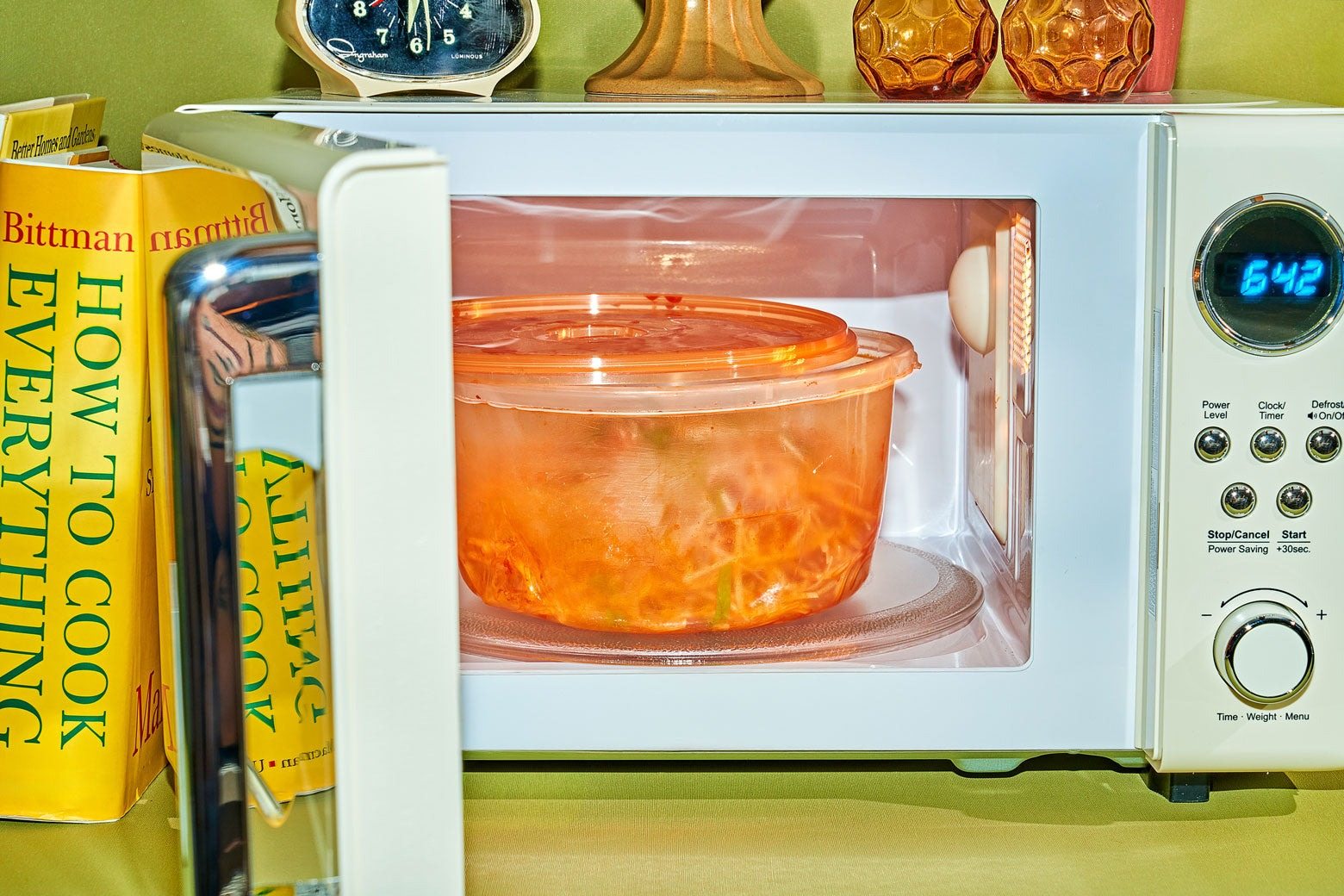When you cook food or drink in a plastic container in the microwave, chemicals already in the plastic can move into the food. Tiny pieces of plastic called micro- and nanoplastics can also be released into the food, which can be bad for your health.
Plastic uses thousands of chemicals to give it color, texture, softness, or rigidity. Of the 16,000 chemicals known to researchers, 3,200 are considered “substances of concern” because they are known to cause cancer, disrupt neural development, and hijack hormonal signals throughout the human body.
Many of the chemicals in plastics can move into food, even at room temperature. Plastic packaging also lets micro- and nanoplastics shed into food at room temperature, but this process speeds up when plastic is heated.
How does this affect us?
As early as 2003, scientists wrote about how using plastic packaging in the microwave can cause chemicals to leak into food. More recently, researchers found that polypropylene (#5) labeled as “microwave safe” released 4.2 million and 1.2 billion particles per square centimeter of plastic each after being heated in a microwave when baby food containers from two mainstream U.S. brands were tested.
Endocrine Disruption Plastic chemicals can disrupt hormones in the body. EDCs can disrupt appetite and metabolism (which can lead to obesity, diabetes, and heart disease), cell growth regulation (which can cause cancer), and neurodevelopment (which can lead to autism, ADHD, and other learning and behavior disorders). They can also impact the reproductive system (e.g., early puberty, infertility, and male congenital disabilities).
Common chemicals that disrupt hormones in food packaging include ortho-phthalates, PFAS, and perchlorate.
Most at risk
As with other environmental toxicants, endocrine disruptors are more dangerous for children than adults. They are particularly dangerous for newborns, toddlers, pregnant people, and the developing fetus.

 Discuss
More news
Discuss
More news

